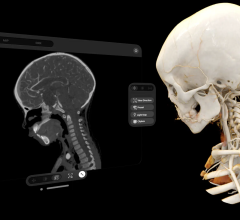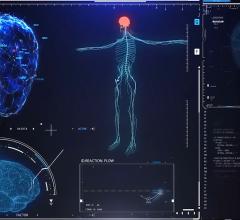April 2, 2009 — With the Medicare and Medicaid incentives for health information technology use announced, almost 70 percent of U.S. hospitals are only two steps or less away from having the health IT applications necessary to deliver the likely objectives of ‘meaningful use’ for the electronic medical record, according to the HIMSS Analytics EMR Adoption Model (EMRAM).
While only six percent of hospitals report comprehensive adoption of health IT applications often associated with the American Recovery and Reinvestment Act (ARRA), EHR criteria (major ancillary department information systems, clinical documentation, computerized physician order entry and clinical decision support), 67 percent need to add only one or two of these applications to have this threshold of EHR functionality available for their clinicians’ use.
“Our data show that the majority of U.S. hospitals tracked by the HIMSS Analytics Database are just two stages or less away from having the applications implemented to achieve an electronic medical record tool capable of realizing ‘meaningful use’ objectives,” said David E. Garets, HIMSS Analytics president and CEO. “That means that almost three quarters of U.S. hospitals are on the right track to EMR implementation. We believe that when hospitals reach Stage 4 on the EMRAM, they will be able to meet many, if not most, of the pending criteria for the current definition of ‘meaningful use’ of the EMR.”
“We fully recognize that implementing the technology is necessary but not sufficient as change management must also be a component of the EMR implementation process. We believe that ‘meaningful use’ will demand measurement and reporting of clinical quality, patient safety, and cost reduction data, for example. That data should be available to hospitals as a byproduct of their EMR’s clinical documentation and reporting tools.”
Developed in 2005, the EMRAM has become an industry standard to measure the progress in EMR implementation for healthcare organizations. As of December 2008, in the 8-stage EMR implementation process, EMRAM data show:
- 31.2 percent of hospitals rank at Stage 2, meaning that they have implemented a clinical data repository that contains orders, lab, radiology, and pharmacy data and allows clinicians to review results electronically
- 35.7 percent are at Stage 3, meaning that they’ve implemented nursing documentation capabilities on at least one unit of their hospital and have clinical decision support to support nursing procedures; and
- 6 percent rank at or beyond Stage 4 meaning they have advanced EMR capabilities such as computerized practitioner order entry, physician documentation, data warehousing and mining capabilities, and full radiology PACS.
HIMSS Analytics collects data from 5,166 hospitals, a census of the non-federal, medical/surgical hospitals in the U.S.
For more information: www.himss.org, www.himssanalytics.org/


 May 01, 2024
May 01, 2024 








